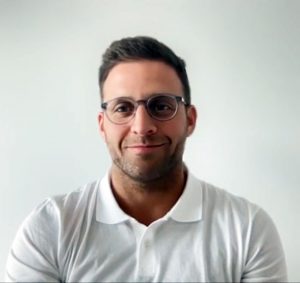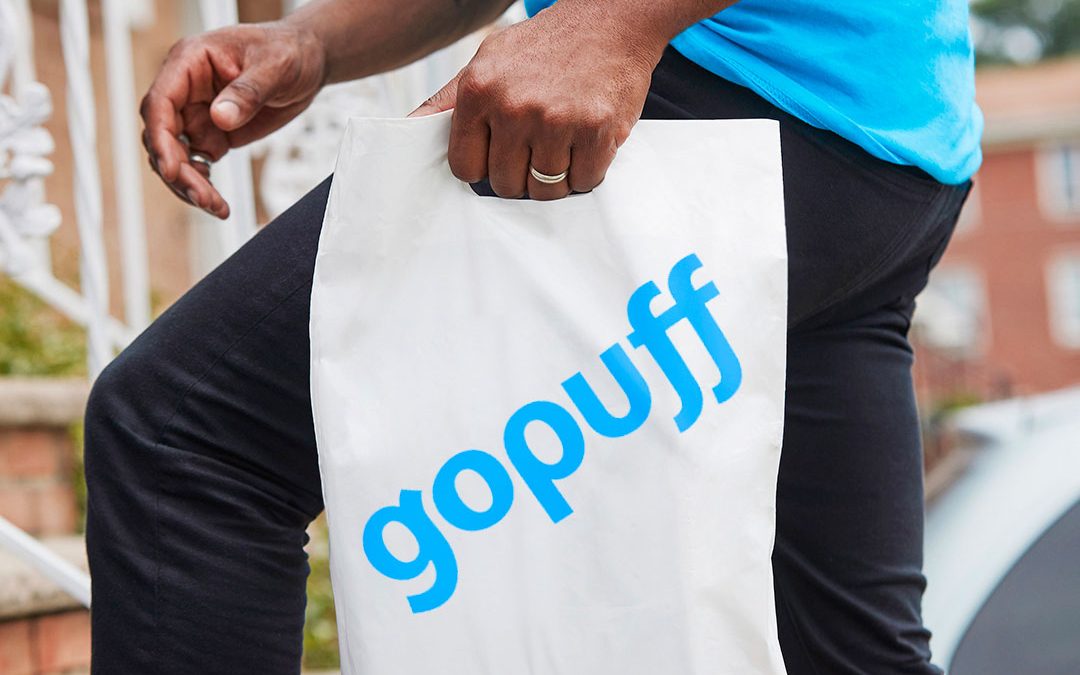When the food-on-demand space exploded into the mainstream, it was initially a software play. Aggregators and delivery providers sought to have the fewest hard assets as possible, even eschewing employees in favor of the burgeoning gig-work industry.
Gopuff SVP of Business Daniel Folkman said company founders Rafael Ilishayev and Yakir Gola started the company in 2013 with almost the opposite way of thinking. And they didn’t take any venture capital with scale-at-all-cost strings attached.
“We spent those first years thinking through how we would make the business work if we didn’t bring on any capital. We were from Philadelphia; we weren’t in the VC world. We built the business to sustain itself,” sad Folkman.

Daniel Folkman, COO at Gopuff.
The outcome was an “asset-heavy” and complex business with massive amounts of inventory and lots of real estate. The only crossover with the first-wave delivery providers was using gig drivers to complete the last-mile logistics.
Today, it’s even more complex. Gopuff operates in more than 1,000 cities across the U.S., the U.K. and France, and it oversees more than 600 microfulfillment outlets from which an army of delivery drivers grab goods for orders, typically completed within 20 minutes. It also just launched its own private-label products. The company is valued at $40 billion, as of its last fundraising round, which is rumored to be the last fundraising before going public.
Essentially, Folkman said during a discussion the 2022 ICR conference, the company demonstrated there was plenty of opportunity in solving hard problems.
“There’s this sentiment in tech that if a business is complex, you won’t make money,” said Folkman. “That’s wrong.”
If anything, he added, solving the hard problems has made growing the business easier. Because Gopuff controls the entire experience, it has complete transparency into every little corner of the business and the potential to enhance every step along the way.
“We have full visibility into where that product is, so when people order, it shows up. And because all the inventory is coming from our fulfillment centers, we have more control. Our employees are coming to our stores and getting multiple orders, [so] they’re able to do more orders per hour and make more money,” said Folkman. “Then the scale, by operating your own network at scale it gets more efficient, that’s across the board. It’s not just inventory, but inventory management and the data we’ve been able to collect.”
That stretches all the way into its warehouses, allowing Gopuff to “evolve pretty rapidly” based on an incredible amount of data.
He added that part of the power is being involved in every one of those 1,000 cities.
“We have national reach, but we have a local operation base,” Folkman said. “We can hollow out where consumers are and optimize for the best experience, our drivers make money and we have control. That’s where you start to see the healthy unit economics.”
He said three pillars dictate how the company will continue scaling: grow geographically, expand verticals and invest in the technology. Those guiding principles led the company M&A strategy, as it made six acquisitions beginning with Bevmo, a California-based liquor delivery company.
So far, it has acquired four other instant-delivery and alcohol companies. It has also purchased some technology that makes the rider experience and transparency better, hitting on the third pillar. In the middle is the newer development of prepared foods.
“We’re selling fresh pizza, coffee, breakfast sandwiches out of these micro kitchens. All made in house,” said Folkman. “Talk about economics, you have a higher profit margin on fresh baked goods than our non-owned baked goods,” said Folkman. “We have 60 locations now, and we have plans to expand that.”
The big question at ICR was about the potential for a Gopuff IPO, rumored to be happening this year. It issued a pre-IPO convertible note to raise $1.5 billion. Folkman was reluctant—likely legally reluctant—to get into details there. He did say it was a hot category, so if there is a window to go public, 2022 seems like the right time, even with market volatility.
Regardless of what happens in the markets, Folkman said Gopuff will fight to keep its No. 1 position in the instant-need category.
“Today, we’re the category leader with over 60 percent category share in the instant-need category. That’s the result of a lot of years of hard work and operational knowhow,” he added. “Our belief is we want to enter a market and win; we want to be the No. 1 player. We have three huge markets, U.S., France and U.K., that’s where we’ll focus our efforts as far as geographic expansion.”




